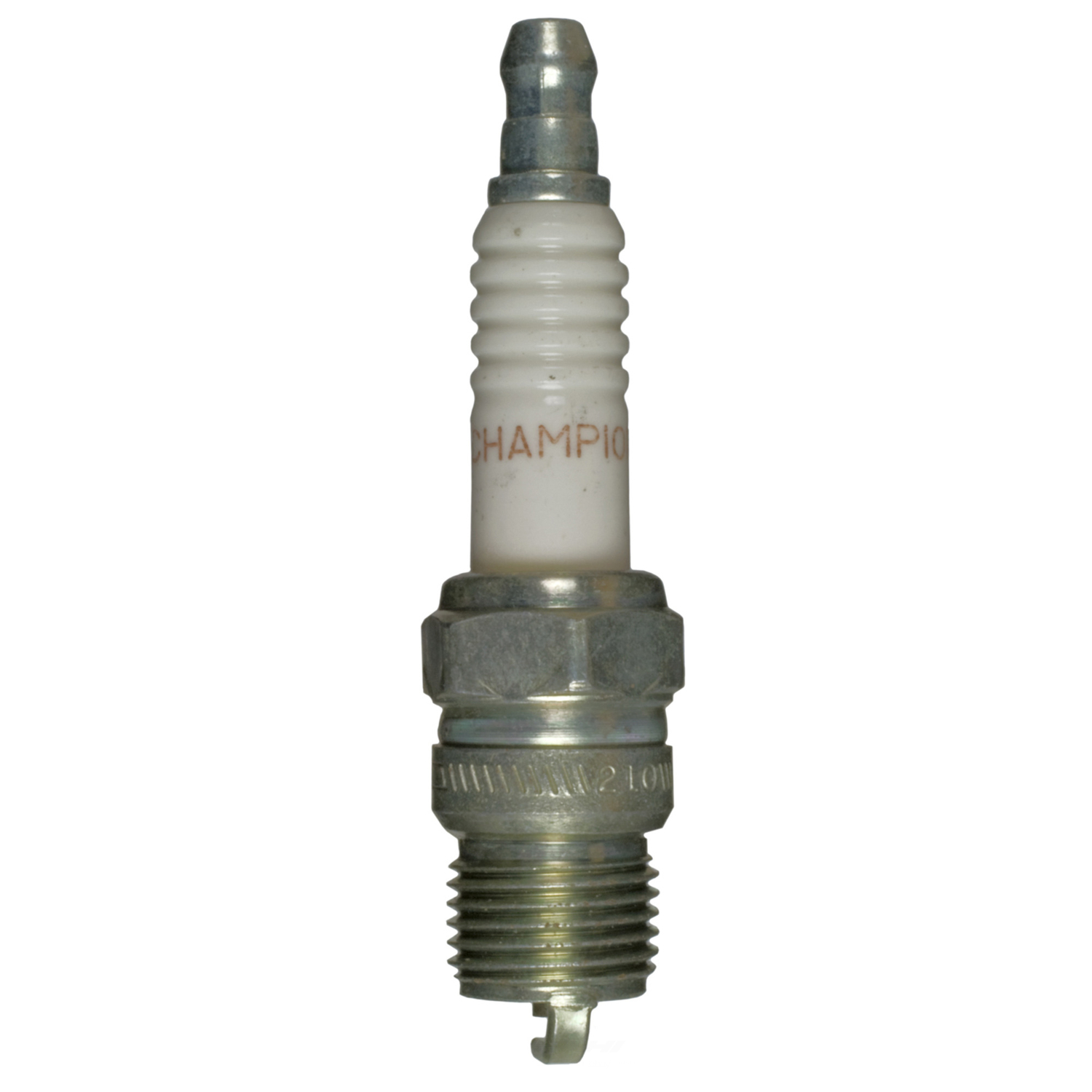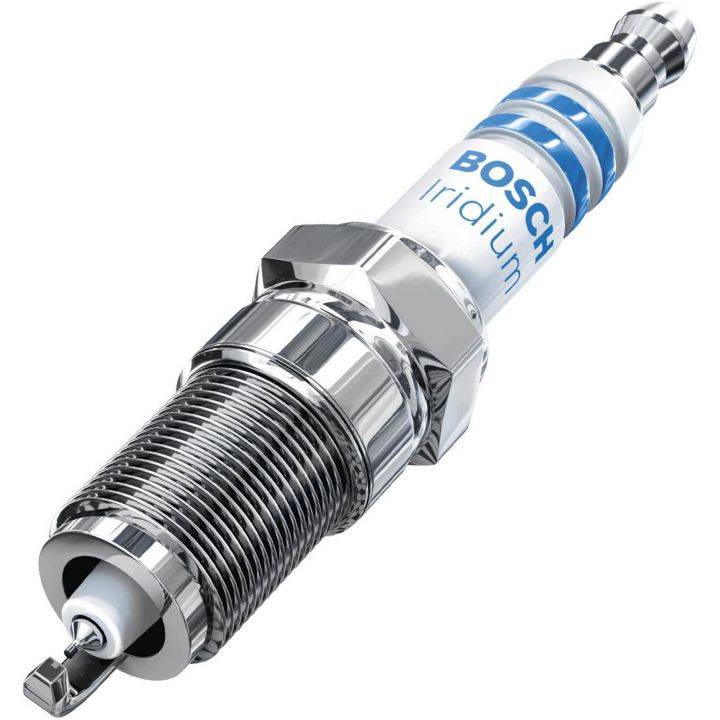Spark Plugs: The Ignition Powerhouses
Spark plugs are a crucial component of internal combustion engines, playing a vital role in the ignition process. They provide the electrical spark needed to ignite the air-fuel mixture inside the engine's cylinders, initiating the combustion process that powers internal combustion engines. In this article, we will explore the function, types, maintenance, and importance of spark plugs.
How Spark Plugs Work:
At its core, a spark plug is a device designed to create an electric spark at the precise moment required to ignite the air-fuel mixture inside an engine's cylinders. When the piston reaches the top of its compression stroke, the spark plug delivers a high-voltage electrical discharge across its gap, creating an arc of electricity. This arc ignites the compressed air-fuel mixture, leading to controlled combustion and power generation.
The ignition system provides the necessary electrical energy to create the spark. The voltage required for spark creation ranges from thousands to tens of thousands of volts, depending on factors such as engine speed, load conditions, and fuel characteristics. The spark plug must be able to withstand these high voltages and provide a reliable spark every time.
Parts of a Spark Plug:
A typical spark plug consists of several essential components:
Center Electrode: This electrode protrudes into the combustion chamber and is connected to the ignition system. It conducts the electrical current from the ignition source to create the spark.
Insulator: Made from ceramic material, it isolates the center electrode from the outer metal shell. The insulator prevents electrical leakage and ensures that all electrical energy is channeled through the center electrode to create a consistent spark.
Ground Electrode: Located at the base of the plug, it helps control the position and intensity of the spark. The ground electrode is designed to have a specific shape and gap distance from the center electrode to ensure optimal performance.
Terminal: The connection point for the ignition wire or coil. The terminal allows for easy installation and removal of the spark plug while providing a secure electrical connection.

Each component plays a critical role in generating a reliable spark and maintaining proper combustion within the engine.
Types of Spark Plugs:
There are several types of spark plugs available in the market today. The choice of spark plug depends on factors such as engine design, fuel type, and desired performance characteristics. Here are three commonly used types:
Copper Core Spark Plugs:
These traditional spark plugs have a solid copper core that provides excellent heat transfer but wears out relatively quickly compared to other types. Copper core plugs are generally more affordable and offer good performance for standard engines.
Platinum Spark Plugs:
Platinum spark plugs feature a small disc or pellet made from platinum alloy on their center electrode. Platinum is known for its durability and resistance to wear, making these plugs last longer than copper core ones. They also provide improved performance by ensuring consistent ignition over an extended period.
Iridium Spark Plugs:
Considered the most advanced type of spark plug, iridium plugs use a fine wire made from iridium in their center electrode. Iridium is an incredibly hard and durable metal that resists erosion even under harsh operating conditions. These plugs offer superior longevity and enhanced performance compared to both copper core and platinum plugs.
The choice between platinum and iridium plugs often comes down to specific engine requirements, budget considerations, and personal preferences.
Importance of Spark Plug Maintenance:
Regular maintenance of spark plugs is crucial for optimal engine performance and fuel efficiency. Neglecting proper maintenance can lead to decreased power output, reduced fuel economy, increased emissions, and potential damage to other engine components. Here are some key points to consider:
1. Inspect and clean spark plugs periodically: Over time, carbon deposits can accumulate on the electrodes, affecting their performance. Regularly inspecting and cleaning your spark plugs can help remove these deposits and maintain optimal performance.
2. Replace worn-out or damaged spark plugs: Spark plugs experience wear due to high temperatures and electrical stress over time. Manufacturers typically recommend replacing them after a specific mileage or time interval outlined in your vehicle's owner's manual.
3. Use the correct type and heat range of spark plug specified for your vehicle: Different engines require specific types and heat ranges of spark plugs for optimal performance. Using incorrect or incompatible spark plugs can lead to poor combustion, misfires, and potential engine damage.
4. Check and adjust electrode gaps as necessary: The distance between the center electrode and ground electrode is called the electrode gap or plug gap. This gap affects how easily the spark can jump across during ignition. It's important to periodically check and adjust this gap within manufacturer specifications using a feeler gauge.
Signs of Failing Spark Plugs:
Failing or worn-out spark plugs can lead to various engine problems that negatively impact performance and fuel efficiency. Look out for these signs indicating potential issues with your spark plugs:
1. Rough idling or misfiring engine: If you notice your engine running unevenly at idle or experiencing frequent misfires during acceleration, it could be due to worn-out or malfunctioning spark plugs.
2. Difficulty starting your vehicle: A faulty or worn-out spark plug may make it harder for your vehicle's engine to start smoothly or immediately after turning the key.
3. Reduced fuel efficiency: If you notice a sudden decrease in fuel economy without any apparent changes in driving conditions or habits, it could be due to inefficient combustion caused by worn-out or dirty spark plugs.
4. Engine hesitation or lack of power during acceleration: Worn-out or malfunctioning spark plugs can cause poor combustion, resulting in reduced power output when you accelerate.
If you experience any of these symptoms, it's recommended to have your vehicle inspected by a qualified mechanic who can diagnose any potential issues with your spark plugs or other related components.

Spark Plug Condition and Replacement:
The condition of your spark plugs can provide valuable insights into the overall health and performance of your engine. Examining their appearance during routine inspections can help identify potential issues and determine when replacement is necessary. Here are some common conditions and what they may indicate:
1. Normal Wear: Over time, spark plugs experience natural wear due to high temperatures and electrical stress. Normal wear is characterized by a gradual accumulation of carbon deposits on the electrodes, known as fouling. This condition is typically indicated by a light tan or grayish appearance on the insulator. While some fouling is normal, excessive deposits may hinder spark plug performance, leading to misfires, reduced power, and poor fuel efficiency.
2. Wet Fouling: If you notice wet or oily deposits on the spark plug's insulator, it indicates a problem with the combustion process. Wet fouling can be caused by an overly rich air-fuel mixture, worn piston rings, valve seals, or other internal engine issues. Addressing the underlying cause is crucial to prevent further damage and ensure proper spark plug function.
3. Dry Fouling: Dry fouling occurs when the spark plug fails to reach a high enough temperature to burn off carbon deposits. It can be caused by short trips or low-speed driving that doesn't allow the engine to reach its optimal operating temperature. Dry fouling is often accompanied by rough idling, misfires, and decreased power output.
4. Electrode Erosion: Excessive electrode erosion can occur due to prolonged use or incorrect spark plug heat range selection. Erosion appears as a thinning or melting of the electrode material, reducing the spark plug's ability to generate a consistent spark. This condition may lead to misfires, engine hesitation, and increased fuel consumption.
5. Cracks or Damage: Inspect your spark plugs for any visible cracks, chips, or damage to the ceramic insulator or metal shell. Cracks can allow moisture, oil, or other contaminants to penetrate the combustion chamber, affecting engine performance and potentially causing severe damage.
When to Replace Spark Plugs:
While modern spark plugs are designed to last longer than their predecessors, they still require periodic replacement to maintain optimal performance. The exact replacement interval varies depending on factors such as vehicle make and model, driving conditions, and manufacturer recommendations. However, here are some general guidelines:
1. Copper Core Spark Plugs: These traditional plugs typically have a recommended replacement interval of around 20,000 to 30,000 miles (32,000 to 48,000 kilometers).
2. Platinum Spark Plugs: Platinum plugs usually offer an extended lifespan compared to copper core ones. They often have a recommended replacement interval ranging from 60,000 to 100,000 miles (96,000 to 160,000 kilometers).
3. Iridium Spark Plugs: Iridium plugs are known for their durability and longevity. They commonly have a recommended replacement interval between 80,000 to 120,000 miles (128,000 to 193,000 kilometers) or even longer.
It's important to consult your vehicle's owner's manual for specific recommendations regarding spark plug replacement intervals for your particular make and model.
Understanding the condition of your spark plugs and knowing when to replace them is essential for maintaining optimal engine performance and fuel efficiency. Regularly inspecting your spark plugs for signs of wear, fouling, erosion, or damage can help you address potential issues promptly and ensure smooth operation of your engine.
By following manufacturer recommendations for replacement intervals and using the correct type of spark plugs for your engine, you can maximize the lifespan of your plugs while enjoying improved performance and fuel economy.
Remember that if you're unsure about inspecting or replacing your spark plugs yourself, it's always best to consult a qualified mechanic who can provide expert guidance and assistance tailored to your specific vehicle needs.
Spark plugs may seem like small components within an engine, but they have a significant impact on overall performance and efficiency. Understanding their function, types, and maintenance requirements can help you keep your vehicle running smoothly while maximizing fuel economy and power output.
Regular inspection, cleaning, replacement when necessary, using compatible plugs for your engine type, and adjusting electrode gaps are all essential aspects of maintaining healthy spark plugs.
Remember to consult your vehicle's owner's manual or seek professional advice when working with spark plugs to ensure you follow proper procedures for your specific make and model.
So there you have it! A comprehensive overview of spark plugs and their importance in keeping our engines firing on all cylinders.
 Loading . . .
Loading . . .








